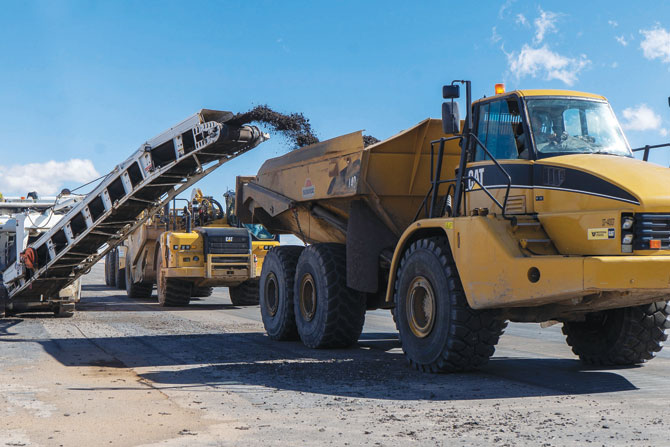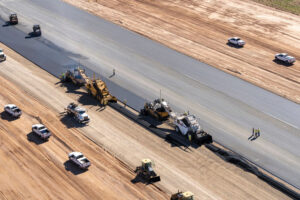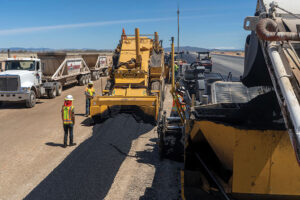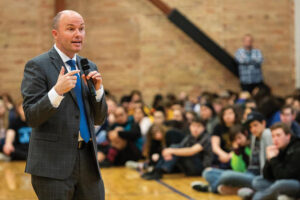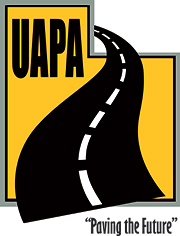By The Utah Asphalt Pavement Association
The Power of Airports
Airports can fuel economic development and lift the local economy off the ground. Airport improvement projects are key to raising the economic profile of the surrounding region. The Cedar City Regional Airport itself occupies 1,040 acres and has two runways, 2-20 and 8-26. The airport currently serves the following:
- Air charter operators
- Air taxi operators
- Pilots and passengers
- Scheduled air carriers for cargo and
passengers
Origin of the Airport
The airport’s initial construction occurred in 1929 when the federal government installed an emergency landing strip for airmail. The Cedar City Chamber of Commerce recommended that Cedar City receive control of the airport in July 1931, and control transferred March 1938. In 1941, a CAA grant of $287,000 enabled civic leaders to level and grade the airfield. They had two runways built, fenced and lighted the boundary, and added a beacon. Southern Utah University (then called Branch Agricultural College) began training pilots in 1938, and still uses the airport for flight training today. Commercial airline service started in 1951, and the airport currently has SkyWest Airlines providing daily flights to and from Cedar City.
Today, the Cedar City Corporation owns the Cedar City Regional Airport, and the airport board consists of volunteers from our local community who are appointed by the mayor and represent the city. The Airport Board consists of eight board members who assist the airport manager and staff in management decisions related to the airport rules and regulations. Airport Board meetings are publicly held meetings, and the board invites all who have an interest in aviation to attend. These meetings are a great way for individuals to be kept up-to-date on current events at the airport.
Renovation Happening Now
Cedar City Regional Airport is currently undergoing a runway reconstruction project with Sunroc Corporation, a UAPA Member. The scope of the project includes the following:
- Reconstructing Runway 2-20 and rehabilitating Runway 8-26. The pavement on runway 2-20 was 24-55 years old; a runway’s life expectancy is 20 years. The asphalt on portions of Runway 8-26 was 49 years old.
- Correcting Runway 2-20’s nonstandard cross slope at intersections, areas where water ponds during storms (a safety issue), a nonstandard longitudinal slope, and nonstandard lighting where Runway 2-20 intersects with Runway 8-26.
- Relocating a wildlife fence near Runway 2-20 outside the object free area. Also, the MALSR lighting system needed replacement after more than 30 years, and after more than 25 years, so did the lighting and signing system on the airfield. The airport has gone through and renamed its taxiways and intersections leading onto the main runway. These changes will conform with a more logical configuration that will bring the airport’s layout plan more in line with the FAA’s recommended standard. These changes will reduce risk and allow pilots to avoid loss of situational awareness.
- Finally, the existing irrigation box culvert and pond dikes needed to be moved outside the airport property. This change will increase safety and functionality for the airport while still allowing the irrigation company to provide water to all those property owners that rely on it west of the airport.
Cedar City is excited about these improvements. The new and improved runway will meet all of the FAA design standards and will provide the community with a runway that will allow the community to benefit from businesses that choose to fly in and out of Cedar City. Many of the local factories and businesses use the airport. Some of these businesses that rely on the airport include:
- BLM Tanker Base
- Charlotte Pipe
- FedEx
- Life Flight
- Rocky Mountain Retina
- Staheli West
- SUU
- Syber Jet
- The Levitt Group
- UPS
We think that with a new runway, and an economy that has faired better than some through this pandemic, the project will help in marketing efforts to bring in new business to the area.
Ryan Marshall, Director of the Public Works Department, says his office is excited about bringing the airport up to specifications because the last reconstruction took place more than 30 years ago. “After the reconstruction is done, we will have an upgraded airport for planes to land and passengers to enjoy. We hope that after the coronavirus, the remodeled Cedar City Airport will become a destination hub for all that we have to offer with the Utah Shakespeare Festival, the Utah Summer Games, our diversified recreational activities, and our proximity to several national parks.”
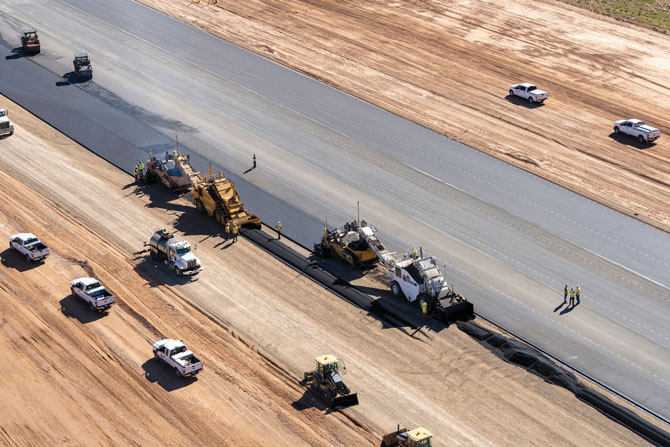
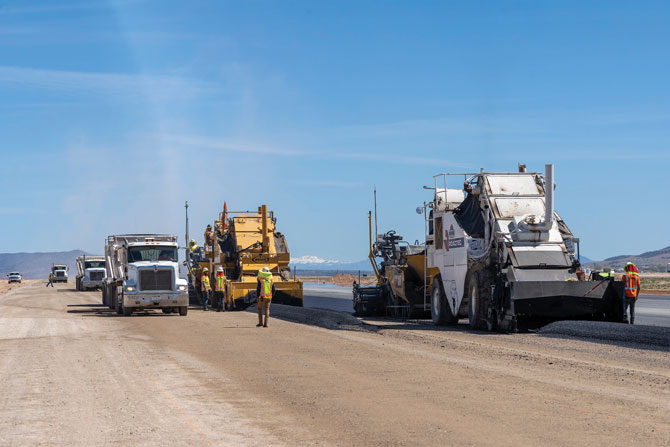
Project Update and Funding
The airport reconstruction and rehabilitation project started March 16, 2020, and completion is scheduled by Sept. 25, 2020. Sunroc Corporation is constructing the project. The total cost of the project is slightly less than $17 million. Approximately $16 million has been set aside to pay for the cost of construction, and less than $1.3 million will cover the cost of replacing the MALSR Approach Lighting System.
Funds for the project are being provided primarily by the FAA, with Cedar City paying $859,130 of in-kind services. The FAA can provide the funds because of its Airport Improvement Program (AIP). This program collects tax revenue from four different tax sources:
- Commercial and general aviation fuel
- Commercial passenger tickets
- Domestic cargo and mail
- International arrival and departure
Phases of the Project
The completed reconstruction of the airport will follow seven phases, starting in March 2020. Runway 2-20 has not been in commercial use since phase 1. It will open for daytime use at the start of phase 4.
Kelly Cox, Sunroc, is the project manager. He reports that during the entire reconstruction process, 4,800 feet on the runway have been open at all times. Even though there haven’t been commercial flights, FedEx has been able to continue its deliveries, and the SUU aviation program has been fully functional and has lost no revenue as a result of the reconstruction that has been done. This accomplishment was possible because of doing the work in phases. Most of the heavy lifting for the project started March 16 and will be finished July 18, when the first five phases will be complete. The remaining phases have to be delayed a month because paint bleeds on brand-new asphalt; the asphalt will be marked with temporary paint until it has aged enough to put on the final coat.
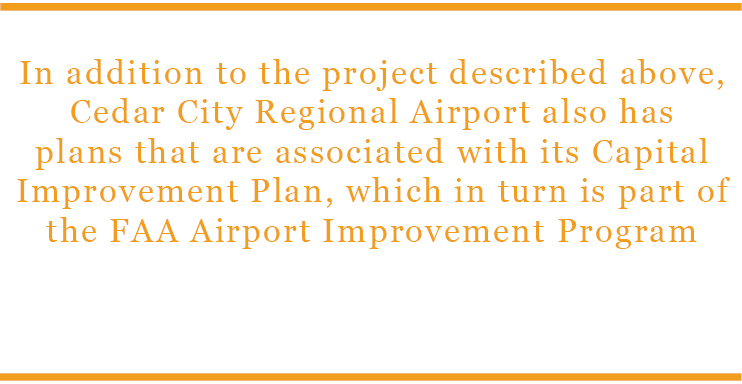
The specific phases of the project are
as follows:
- PHASE 1: March 16-May 14. The south half of Runway 2-20 was rebuilt. When commenting about phase 1, Nick Holt, Cedar City Airport Manager: Q&A said, “It was nice to be able to work with such great professionals within this industry. JVIATION is a national engineering company that has an office right here in Southern Utah, and they engineered and designed this runway. It’s been rewarding to walk through this process and see all the effort that has gone into planning and preparing for this project, and then move into the construction phase and watch such a great plan come together so well. Sunroc has said that these are some of the tightest tolerances that they have had to perform work to in order to meet the specifications that have been laid out in this project, and they have told me that they have done everything that they can to give us the very best. I believe them. The pavement’s final inspection showed that they have stayed within a quarter of an inch variance all the way up and down this section of pavement. I call that precision!”
- PHASE 2: May 15-July 18; The north half of Runway 2-20 is currently being rebuilt. For Runway 2-20, Takeoff Runway Available (TORA) is 4,350 feet. Landing Distance Available (LDA) is 3,850 feet. Runway 8-26 is closed.
- PHASE 3: April 9-May 7, 2020. This work moved along well and was conducted alongside the work being completed in Phase 1 and Phase 2. Nick Holt, the Airport Manager, has been impressed with the professionalism and work ethic that Sunroc has provided. During Phase 3, the west side of the safety area for Runway 2-20 was regraded. Sunroc removed the existing asphalt and stockpiled it for the airport to reuse in the future. Sunroc regraded the existing base course and added a new base course. All work done meets the design grades. The plan was to pave 4 inches of asphalt and regrade the shoulder.
- PHASE 4: This phase was started earlier than previously scheduled (July 20-Aug. 10). It involves reconstructing sections of Runway 8-26. The runway has been milled and over excavation work has begun. Sunroc is now ahead of schedule.
- PHASE 5: For this phase, the runway has been milled and over-excavation has started, putting this phase ahead of schedule, too. The work was originally scheduled to take place July 20-Aug.10. When the work is done, Runway 2-20 will be available again for commercial service.
- PHASE 6: Sept. 9-Sept. 22. Grooving Runway 2-20 during the night (8 p.m. to 6 a.m.)
- PHASE 7: Sept. 22-24. The final phase: Crews will paint both runways (2-20 and 8-26), on an intermittent schedule. The portions of the runway that are being painted will be closed while the work is being done. The airport will take into consideration the commercial flight times during this period in an attempt to avoid any delays or disruptions to scheduled service. The airport will reopen after the paint is dry.
In addition to the project described above, Cedar City Regional Airport also has plans that are associated with its Capital Improvement Plan, which in turn is part of the FAA Airport Improvement Program. The reconstruction project will start at the end of the summer in 2020 and will involve reconstructing Taxiway A-1 and part of Taxiway A. Also, the airport helipad will undergo pavement maintenance. The new airport beacon that was installed in 2019 will be paid for. This work will be paid for using a 100% grant from the FAA.
In January 2021, passenger fees will make up the $1 million required to reconstruct and expand the secure terminal area. The airport stairs will be replaced by an open escalator system that will give screened passengers access to the observation deck, and the size of the secure area will increase to accommodate approximately 350 passengers instead of the current 250.
In January 2022, the security access control system will be upgraded for $75,000.
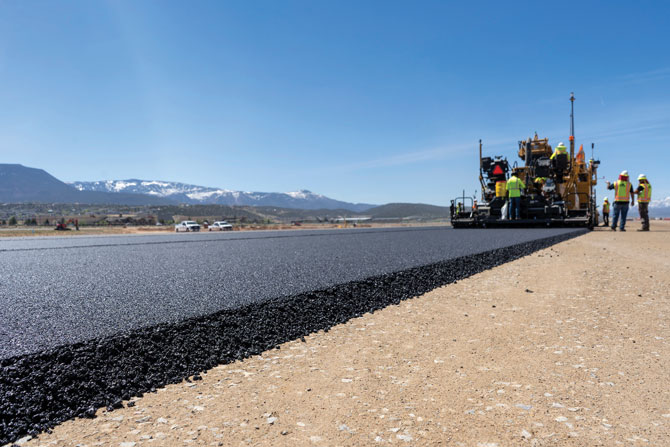
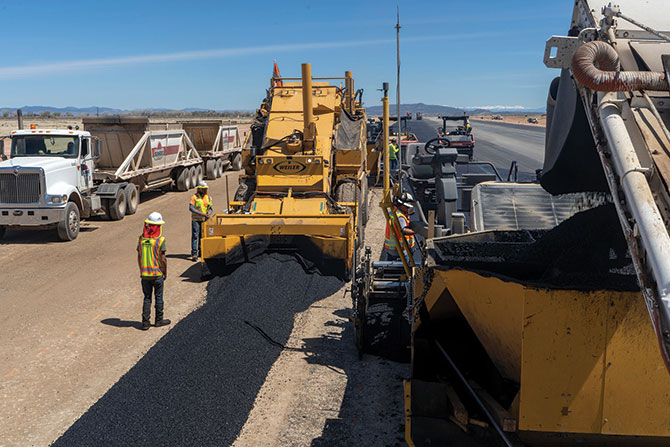
By The Utah Asphalt Pavement Association
This story appears in Issue 3 2019-2020 of On The Road Magazine.

